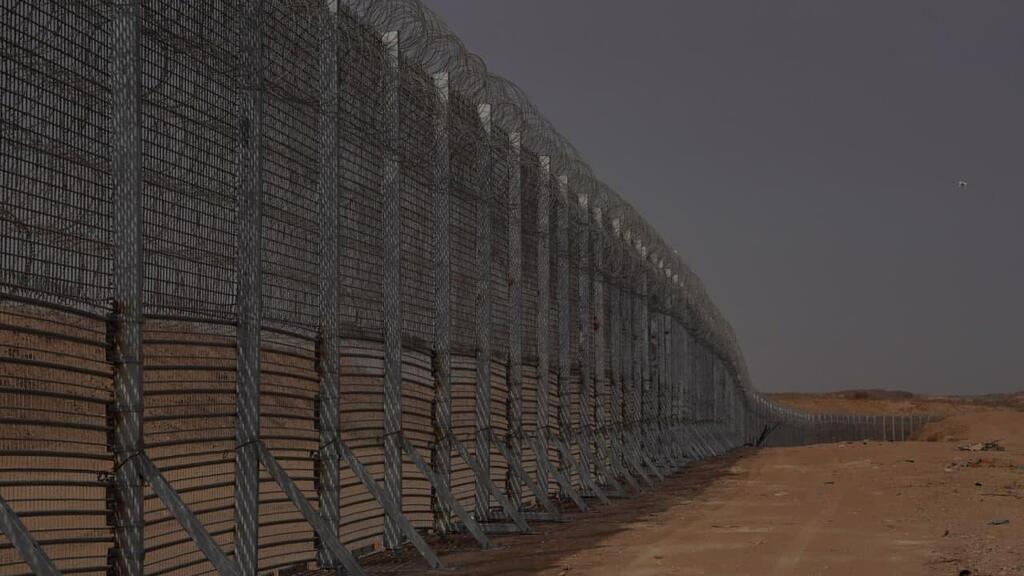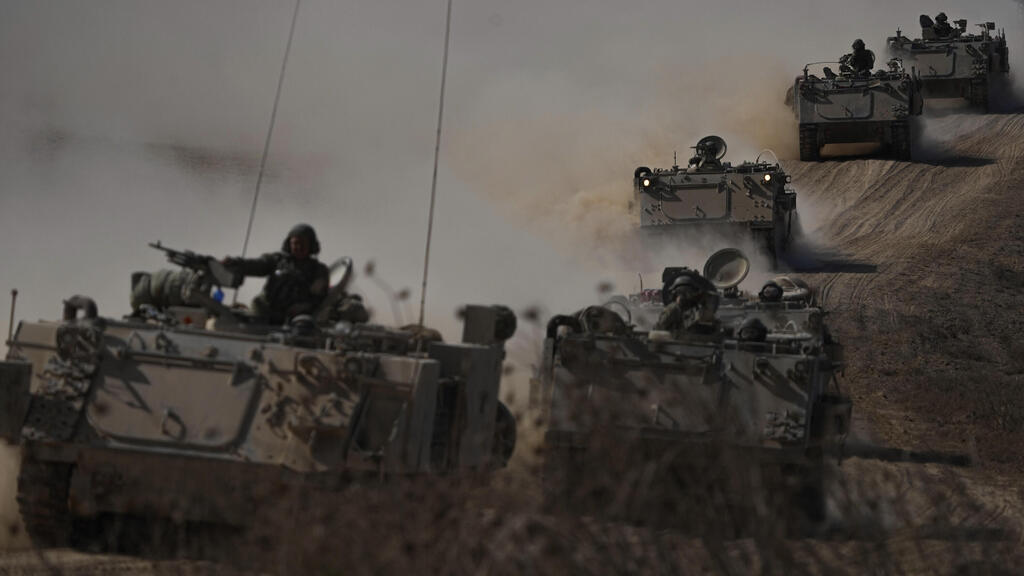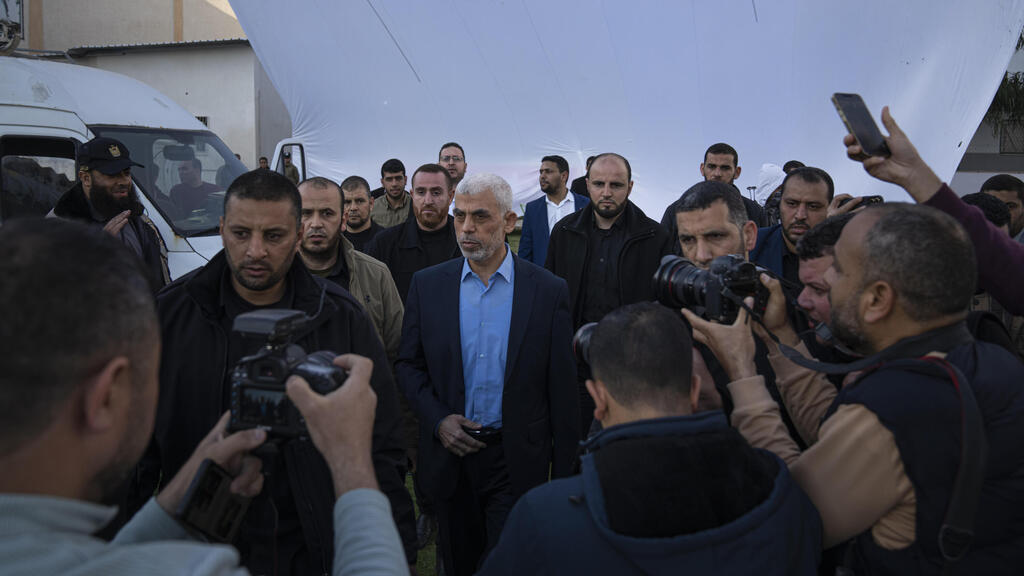Getting your Trinity Audio player ready...
A thorough change and a stable short- and medium-term regularization of the Gaza problem is needed following the war with Hamas. According to accumulated information, it is already possible to outline the grand plan that guides the Israeli security forces, and to some extent the American aid agencies as well.
Read more:
This plan is based on five basic assumptions:
1. The terrorist armies that Hamas and Islamic Jihad deploy hundreds of meters from the settlements in the northern Negev and 70 km from Tel Aviv constitute a threat that endangers the physical security of the citizens of Israel, their sense of safety and their ability to maintain a normal lifestyle and economy. This threat has already been realized in the massacre on October 7, which was carried out by thousands of motivated, trained and well-equipped terrorists who infiltrated Israel, and by the Gazan mob that followed them. The State of Israel and its citizens cannot and do not want to live any longer under this threat, which Iran is fostering and helping the terrorists in Gaza to gain disastrous capabilities, and therefore may become more serious. Israel urgently needs to regain three important elements of national security: strategic deterrence toward the countries of the region that was seriously eroded on Oct. 7, physical security in the south, and a sense of security and trust in the political leadership and the security forces.
2. More than two million Palestinians live in the Gaza Strip, and most of them want to live a normal life with physical security and a sense of safety. They also need to earn a living and be provided with basic and enough freedom of movement and civil services (health, education, water, electricity and public sanitation). They are not provided the minimum they need because the sovereign in Gaza, Hamas, outlined a model of a hybrid government: its civilian wing tries to promote the well-being of the residents, but is forced to act in subordination to and in parallel with its military wing, whose main interest is resistance while conducting an Islamist holy war against the Jewish state. The combative activity of the military wing repeatedly puts the residents of the Gaza Strip into severe economic and civil hardships, then makes efforts to restore the ruins.
3. Therefore, those who threaten Israel and the ability of the Gazans to live a normal life is Hamas, along with Islamic Jihad and other terrorist organizations in the strip. In order to change the situation, it is necessary to remove Hamas' sovereignty and to destroy to the core its' and the other organizations' military capabilities and infrastructure (the jihadist motivation cannot be destroyed, but it is possible to prevent them from organizing on a scale large enough to carry out terrorist operations and killing on a strategic scale). But this is not sufficient. We must ensure that Hamas and the other organizations cannot restore their military and governmental capabilities or establish new infrastructures under a new disguise or configuration.
4. Political and regional aspects: There is a reasonable possibility that Hezbollah and probably Iran and other factors in the radical Shiite axis will join the war and open another front against Israel in the north and maybe also in the northeast. In addition, the Gazan crisis proves once again that Israel needs political support (legitimization), logistics, awareness, and perhaps operational (missile and rocket interception) backup and support from the United States. This will not disappear but will rather increase at least as long as Iran conducts a continuous campaign aimed at erasing Israel from the map. Therefore, it is better that we admit this fact and allow the Americans to help us without losing our freedom of choice and of independent security and political action. Also, it is clear that Israel does not want to lose the Abraham Accords and the chance of normalization with Saudi Arabia.
5. We need to acknowledge the fact that there currently is no factor in the world, including the US, that has a workable recipe for a long-term stable arrangement to the active conflict on the Gaza border, or to the Israeli-Palestinian conflict in general. A two-state solution, under the current conditions in the Middle East, is more of a mantra than a political plan that can be implemented in the foreseeable future. There is also no possibility to eliminate the murderous Islamic fundamentalist theory that aspires to establish a global emirate based on local emirates that will rise on the ruins of the "heretic countries" - including the Jewish state. The Muslim Brotherhood is one of the divisions of this movement, including Hamas and Islamic Jihad.
The five combat objectives
These are the basic facts that guide the decisionmakers in Israel in determining the goals and objectives of the war, and from which the action plan of the state and the IDF should be derived. This plan should be carried out in stages: the first is the current fighting, and the last will be a medium-term arrangement that will allow the IDF to return home.
3 View gallery


The steel barrier erected on the border of the Gaza Strip
(Photo: Spokesperson and Information Division, Ministry of Defense)
These are the objectives of the war:
1. Military operation similar to "Defensive Shield": an attack which will include a maneuver into the northern Gaza Strip to gain military control of the area that would allow the collection of individual intelligence and its immediate implementation. This will be needed to halt missile launching to the home front, as well as to "behead" the leadership and destruct the military and governmental capabilities of Hamas and the Islamic Jihad. This is the purpose of the current crushing airstrikes. The physical control of the entire northern strip up to the Gaza River is necessary to impair the fighters and the military infrastructures, which is also where the operational and symbolic governing center of the Hamas regime is located, and thus it will lose its "capital".
2. In the southern region of the Gaza Strip, Israel will work to achieve the exact same goals using other methods based on accurate intelligence that is already in the hands of Shin Bet and the Military Intelligence Directorate, or intelligence that will be collected while fighting.
3. In the north of the country, the IDF will continue to fight against Hezbollah, against Palestinians operating from Lebanese territory, and possibly also against militias and armed groups from Syria and Iraq. This will be done in an effort to keep the conflicts below the threshold of war and confine them to the border areas - in a scope of days of fighting at most. The IDF will mainly continue to maintain alertness for a powerful and large-scale military action in Lebanon, including ground maneuvers, if Hezbollah at the behest of the Iranians launches a total war. Naturally, Israel prefers to focus and make use of its best forces and resources into fighting in Gaza in order to gain quick achievements. But if Hezbollah and the Iranians decide to escalate into a major war, the IDF has the ability to conduct active combat on a large scale on two fronts. This will cause the fighting to last longer than desired.
4. While fighting in the north and south of Gaza, Israel will work together with the U.S. and the U.N. on the humanitarian level to preserve the legitimacy and the political and logistical support that the U.S. and its allies give to the military action. This includes humanitarian corridors and safe-haven areas to serve the non-involved Palestinians who fled their homes in Gaza following Israel's instruction. Their flow will increase once the fighting starts. International entities and Arab countries will provide these areas - under the supervision and control of the IDF and the U.N. - with essential supplies including water, food, medication and essential services such as electricity (generators) and temporary housing (in tents -winter is approaching).
5. According to the actual achievements in the first weeks of the fighting, Israel should reach decisions together with the US regarding a desired "exit plan" and initiate the political steps necessary to achieve and implement it. The exit plan from Gaza and the regularization procedures after IDF withdrawal should ensure that the achievement of the desired strategic goals to Israel and the U.S. will be maintained for the medium term (5-10 years).
The five strategic objectives
The State of Israel has five strategic goals that it wishes to achieve in the medium term at the end of the fighting in the Gaza Strip:
1. The entire strip should be demilitarized, and arrangements and mechanisms are needed to ensure this.
2. The administration in Gaza should be civil-professional - not ideological-religious and not political - whose only interest is to take care of the well-being of the Palestinian residents. Its authority will derive from a basis of broad international legitimacy, and it should be based on local civil administration, provided that their people are not former operators of the military wing of Hamas or other terrorist organizations. The civil government mechanism will rely not only on the local police, but also on an international law enforcement factor and on cessation of fighting arrangements. Gaza will receive a deep-water port that will be operated under security supervision and will also allow the movement of passengers and tourists to and from Cyprus.
3. The State of Israel should establish an integrated warning and defense system at the border that will provide security to its citizens in case the desired conditions in the Gaza Strip are not met, or they are violated. The security arrangements will include a security perimeter between one and three kilometers wide, which the residents of the Gaza Strip will not be allowed to enter without special prior permission. Whoever enters without permission will risk his life.
4. The IDF will not stay in Gaza for a period of time longer than is necessary to achieve the immediate combat goals and enable the establishment of an alternative administration in the Gaza Strip. However, the IDF and the Shin Bet will retain the right to "hot pursuit" to thwart terrorist attacks and war intentions even after it returns to the territory of Israel.
5. Israel will take into account the global strategic interests and considerations of the U.S. and the domestic political considerations, as well as the religious and strategic interests of the Muslim countries of the region with whom we have peace agreements, normalization, and diplomatic relations.
In the authorized forums, the State of Israel has already decided that its goal is to fundamentally change the situation, and the security forces recognize the need for a drastic change in the thinking and action patterns of the political and military echelons. Certainly, unlike previous military rounds in Gaza, which were conducted on the assumption made by the political and military echelon in Israel, that even at the end of the round, Hamas will remain sovereign in the Strip. The change in the operation patterns can already be seen by the lengthening of the fighting stages, in order to reach the best result, and only then continue. This explains, for example, the lengthening phase of the air, naval and artillery fire strikes in preparation for the ground entry.
The management of decision-making and political and military action will also be different: the decisions regarding the continuation of each phase will be made according to the results of the phase that preceded it. Flexibility in thought and action, patience, slow and calculated use of forces and close cooperation with the Americans are the principles of the current war.




